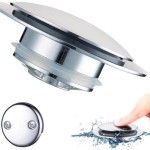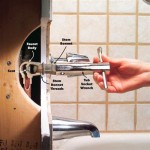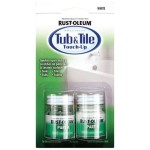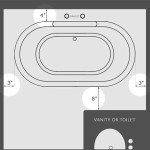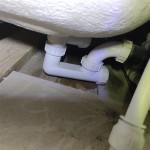How to Clean Hair Out of a Bathtub Drain
A clogged bathtub drain is a common household issue, primarily caused by the accumulation of hair, soap scum, and other debris. Neglecting to address this problem can lead to slow draining, standing water, and eventually, a completely blocked drain. This article provides a comprehensive guide to safely and effectively removing hair from a bathtub drain, utilizing various methods and tools.
Identifying the Problem
Before attempting to clear a bathtub drain, it's essential to correctly diagnose the problem. Slow draining is often the first sign of a developing clog. If water takes longer than usual to drain after a bath or shower, it indicates a partial blockage. Complete blockage, resulting in standing water that doesn't drain at all, requires immediate attention. Other indicators may include gurgling sounds emanating from the drain or an unpleasant odor suggesting bacterial buildup within the clog. Careful observation helps determine the severity of the blockage and the most appropriate course of action.
Methods for Removing Hair from Bathtub Drains
Several methods exist for removing hair from a bathtub drain, ranging from simple DIY solutions to more involved techniques requiring specialized tools. The chosen method depends on the severity of the clog, the type of drain stopper, and the user's comfort level with plumbing tasks. It's always advisable to start with the gentlest methods and escalate to more aggressive techniques if necessary. When dealing with drain cleaning chemicals, extreme caution is paramount, ensuring proper ventilation and adherence to the manufacturer's instructions.
1. Using a Wire Hanger: One of the simplest and most accessible methods involves using a wire coat hanger. Straighten the hanger as much as possible, leaving a small hook at one end. Carefully insert the hooked end into the drain opening and gently probe around to snag any hair or debris. Rotate the hanger as it goes down and pull out any retrieved material. Repeat this process multiple times, rinsing the drain with hot water between each attempt to flush out loose debris. This method is most effective for clogs located near the drain opening.
2. Utilizing a Drain Snake or Auger: A drain snake, also known as a plumbing auger, is a flexible tool designed to reach deeper into drain pipes and break up or retrieve clogs. Insert the snake into the drain opening, turning the handle to advance it further down the pipe. When resistance is encountered, this usually indicates the location of the clog. Continue turning the handle to break up the clog or to snag it with the end of the snake. Once the clog is engaged, slowly retract the snake, removing any retrieved debris. Rinse the drain with hot water to flush out any remaining particles. Drain snakes are available in various lengths and thicknesses, allowing for access to different parts of the plumbing system. Choose a snake appropriate for the size and configuration of the bathtub drain.
3. Employing Baking Soda and Vinegar: This natural and environmentally friendly method can be effective for dissolving minor clogs composed of hair and soap scum. Pour one cup of baking soda down the drain, followed by one cup of white vinegar. The mixture will fizz and bubble, creating a chemical reaction that helps to break down the clog. Allow the mixture to sit for at least 30 minutes, or ideally overnight, to maximize its effectiveness. After the soaking period, flush the drain with hot water. The baking soda and vinegar combination acts as a natural deodorizer and helps to loosen the debris, allowing it to be flushed away. This method is a gentler alternative to harsh chemical drain cleaners and is suitable for routine drain maintenance.
4. Removing and Cleaning the Drain Stopper: Many bathtub drains have a stopper mechanism that can accumulate hair and debris over time. Different types of stoppers exist, including pop-up stoppers, lift-and-turn stoppers, and push-and-seal stoppers. Each type requires a slightly different removal procedure. Pop-up stoppers usually have a linkage mechanism beneath the drain that can be accessed by removing the stopper. Lift-and-turn stoppers typically unscrew from the drain body. Push-and-seal stoppers often require a specialized tool or a pair of pliers to remove them. Once the stopper is removed, thoroughly clean it to remove any accumulated hair and debris. Use a small brush or a cloth to scrub away any residue. Inspect the stopper mechanism for any damage or wear and tear. Reinstall the stopper after cleaning and verify that it functions correctly. Cleaning the drain stopper is a crucial step in preventing future clogs.
5. Utilizing a Wet/Dry Vacuum: A wet/dry vacuum can be used to suction out clogs from a bathtub drain. First, ensure that the vacuum is properly configured for wet use and that the collection tank is empty. Remove the drain stopper, if possible, to provide a clear path for the vacuum hose. Create a tight seal around the drain opening with the vacuum hose, using a wet cloth or towel to fill any gaps. Turn on the vacuum and allow it to run for several minutes to create suction. The vacuum may be able to dislodge and remove hair and debris from the drain. After vacuuming, flush the drain with hot water to ensure that any remaining particles are cleared. This method is particularly effective for removing loose debris and standing water from the drain.
Preventive Measures
Preventing hair clogs in bathtub drains is far easier and more cost-effective than clearing them. Implementing proactive measures can significantly reduce the frequency of drain blockages. These measures include regular cleaning, the use of drain screens, and avoiding the disposal of certain substances down the drain.
1. Regular Cleaning: Regularly cleaning the bathtub drain is essential for preventing the buildup of hair and debris. This can be done by periodically flushing the drain with hot water or by using a baking soda and vinegar solution. Cleaning the drain stopper regularly, as mentioned earlier, is also crucial. Aim to clean the drain at least once a month, or more frequently if you notice slow draining.
2. Using Drain Screens: A drain screen or strainer is a simple and inexpensive device that fits over the drain opening to catch hair and other debris before they enter the drainpipe. These screens are available in various materials, including plastic, metal, and silicone. Choose a drain screen that fits securely over the drain opening and is easy to remove and clean. Empty the screen regularly, typically after each shower or bath, to prevent it from becoming clogged itself. Drain screens are an effective barrier against hair and debris, significantly reducing the risk of drain blockages.
3. Avoiding Improper Disposal: Avoid disposing of substances down the bathtub drain that can contribute to clogs. This includes hair, soap scum, oils, grease, and food particles. Dispose of these materials in the trash or compost bin instead. Be mindful of hair shedding during showers and baths and try to collect and dispose of it properly. Using liquid soaps instead of bar soaps can also help to reduce the buildup of soap scum in the drain.
When to Call a Professional
While many bathtub drain clogs can be resolved using DIY methods, some situations require the expertise of a professional plumber. If the clog is persistent and cannot be cleared using the techniques described above, it may indicate a more serious problem within the plumbing system. This could include a deep blockage located further down the drainpipe or a problem with the drainpipe itself, such as a collapsed or damaged pipe. If you experience recurring clogs, despite implementing preventive measures, it's also advisable to consult a plumber to identify the underlying cause. Attempting to resolve complex plumbing issues without the proper knowledge and tools can potentially damage the plumbing system and lead to more costly repairs. A professional plumber has the tools and expertise to diagnose and resolve these issues safely and effectively.
Choosing Drain Cleaning Chemicals
Chemical drain cleaners are an option for dissolving hair and other organic matter in drainpipes. These products contain harsh chemicals, such as sodium hydroxide or sulfuric acid, that can break down clogs. However, chemical drain cleaners should be used with caution due to their potential for damaging pipes and posing health risks. Always read and follow the manufacturer's instructions carefully when using chemical drain cleaners. Wear protective gloves and eye protection to prevent skin and eye contact. Ensure adequate ventilation by opening windows or using a fan. Avoid mixing different types of drain cleaners, as this can create hazardous fumes. Use chemical drain cleaners as a last resort, after attempting other methods. Excessive use of chemical drain cleaners can corrode pipes and lead to leaks. Consider using enzyme-based drain cleaners as a gentler alternative. These products contain enzymes that break down organic matter without harming pipes.

3 Ways To Clean Hair Out Of A Shower Drain Wikihow

3 Ways To Clean Hair Out Of A Shower Drain Wikihow

3 Ways To Clean Hair Out Of A Shower Drain Wikihow

How To Unclog A Shower Drain Without Chemicals Diy Family Handyman

3 Ways To Clean Hair Out Of A Shower Drain Wikihow

5 Ways To Clean Hair Out Of Your Shower Drain

Top 5 Ways To Get Hair Out Of Your Drains

5 Best Ways To Get Hair Out Of Your Drain Stephens Plumbing

3 Ways To Clean Hair Out Of A Shower Drain Wikihow

How To Unclog Hair From The Drain Get Rid Of Gunk Plenty


